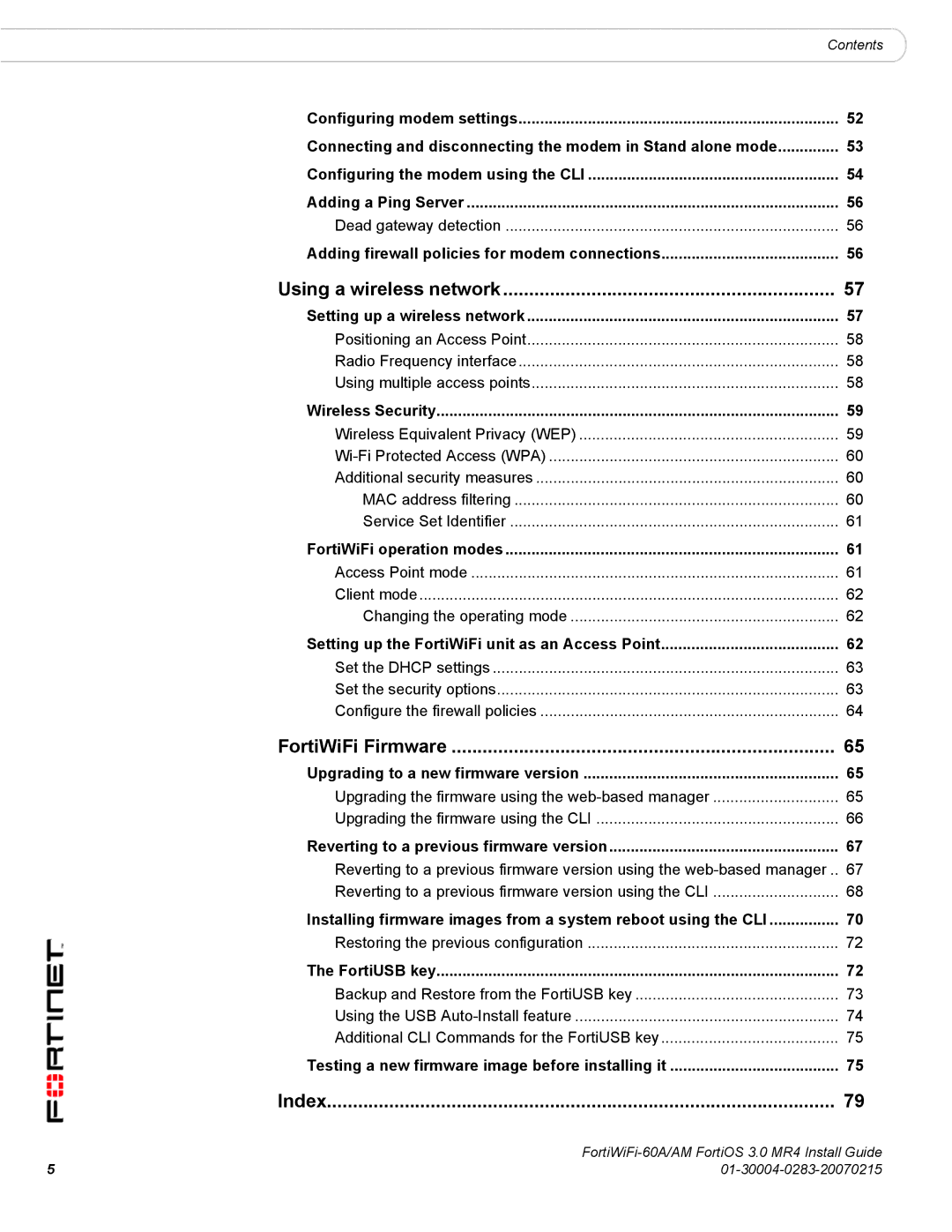
Contents
Configuring modem settings | 52 |
Connecting and disconnecting the modem in Stand alone mode | 53 |
Configuring the modem using the CLI | 54 |
Adding a Ping Server | 56 |
Dead gateway detection | 56 |
Adding firewall policies for modem connections | 56 |
Using a wireless network | 57 |
Setting up a wireless network | 57 |
Positioning an Access Point | 58 |
Radio Frequency interface | 58 |
Using multiple access points | 58 |
Wireless Security | 59 |
Wireless Equivalent Privacy (WEP) | 59 |
60 | |
Additional security measures | 60 |
MAC address filtering | 60 |
Service Set Identifier | 61 |
FortiWiFi operation modes | 61 |
Access Point mode | 61 |
Client mode | 62 |
Changing the operating mode | 62 |
Setting up the FortiWiFi unit as an Access Point | 62 |
Set the DHCP settings | 63 |
Set the security options | 63 |
Configure the firewall policies | 64 |
FortiWiFi Firmware | 65 |
Upgrading to a new firmware version | 65 |
Upgrading the firmware using the | 65 |
Upgrading the firmware using the CLI | 66 |
Reverting to a previous firmware version | 67 |
Reverting to a previous firmware version using the | 67 |
Reverting to a previous firmware version using the CLI | 68 |
Installing firmware images from a system reboot using the CLI | 70 |
Restoring the previous configuration | 72 |
The FortiUSB key | 72 |
Backup and Restore from the FortiUSB key | 73 |
Using the USB | 74 |
Additional CLI Commands for the FortiUSB key | 75 |
Testing a new firmware image before installing it | 75 |
Index | 79 |
5 | |
